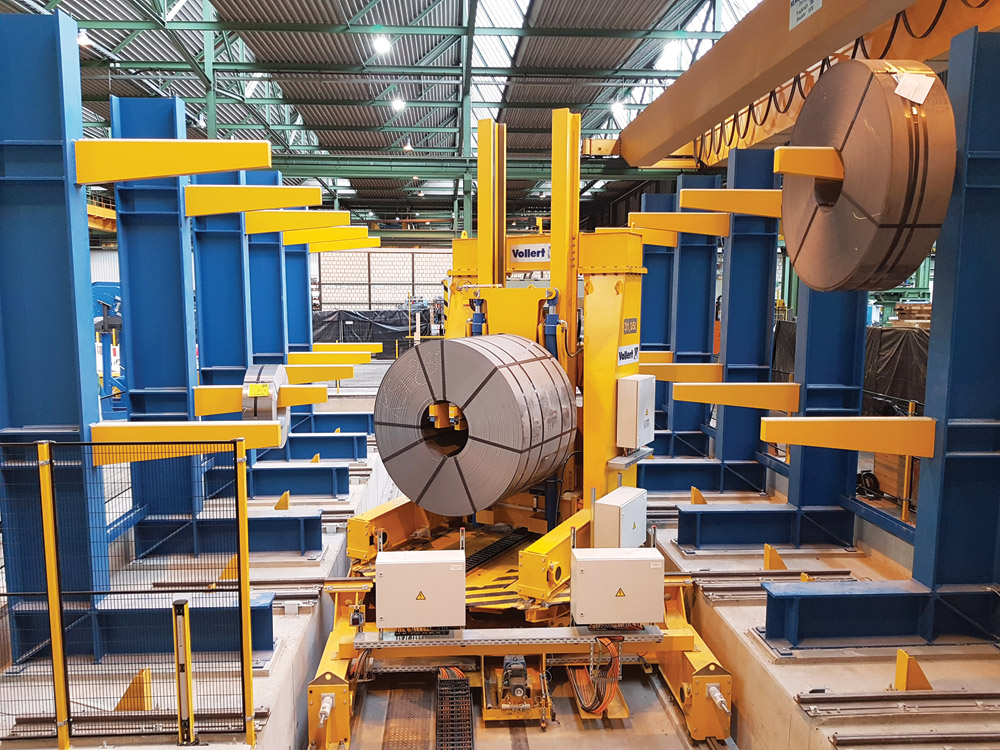Coil runnings
26 February 2020Germany-based Vollert supplied a fully-automated stacker crane to complement Bilstein Group’s new steel handling operations at its headquarters in Hagen-Hohenlimburg.
The Bilstein Group invested in a wide quarto reversing rolling mill and a new slitting line, with a fully-automated buffer store for steel coils up to 1,350mm wide, with weights of up to 31t. For direct access, the coils are stored hanging from cantilevers, with the Vollert crane used for storage and retrieval.
Vollert, based in Weinsberg, develops turnkey intralogistics concepts for the aluminium and metals industry, and were able to address the specific needs of the Bilstein operation: "Fully automated hanging storage of steel coils weighing up to 31 tonnes is a challenge in itself, but the coils also vary individually in size and width," said Lars Strobel, senior sales manager at Vollert. "We have already built similar storage systems several times, so the task was not new to us."
Bilstein wanted a solution with an upstream buffer store with direct access to the individual coils, to ensure optimum utilisation of the slitting line. At the Hagen facility, the cold-rolled strip specialist manufactures products for the automotive industry, among others, that are used in applications such as the drive train through to the seat system, thereby producing varied needs from each customer. Pre-production produces customer-specific steel coils with different diameters and widths, which are then trimmed prior to delivery on the slitting line, and pre-assembled to the required length.
To best suit this set-up, Vollert installed a two-storey cantilever high bay warehouse with storage and retrieval equipment in an existing hall with a low height. In this, two steel coils with a maximum total weight of 62t are stored hanging in the eye of the coil, with a total of ten shelves arranged in parallel in two rows, operated by a centrally-driven stacker crane with a lifting height of 2.5m. After the delivery of the coils by forklift, the automatic measurement takes place.
"Here we determine the exact position of the eye as well as the width and depth of the coil,” says Kevin Dietrich, project manager at Vollert. “Depth measurement is important in order to be able to place the coil as far back on the cantilever arm as possible later during storage. This optimises the load distribution and thus the load on the cantilever arms.”
To access the coils, the stacker crane was mounted on a chassis to make it rotatable, and equipped with an extension lift truck. When a coil is picked up, the extension lift truck travels to the coil rack, lifts it and returns to the travel frame of the crane; during longitudinal travel, the upper carriage of the crane then rotates either to the right or the left of the storage location in the double-row warehouse and deposits the coil on the cantilever arm. The retrieval process follows the same steps, but in reverse order.
